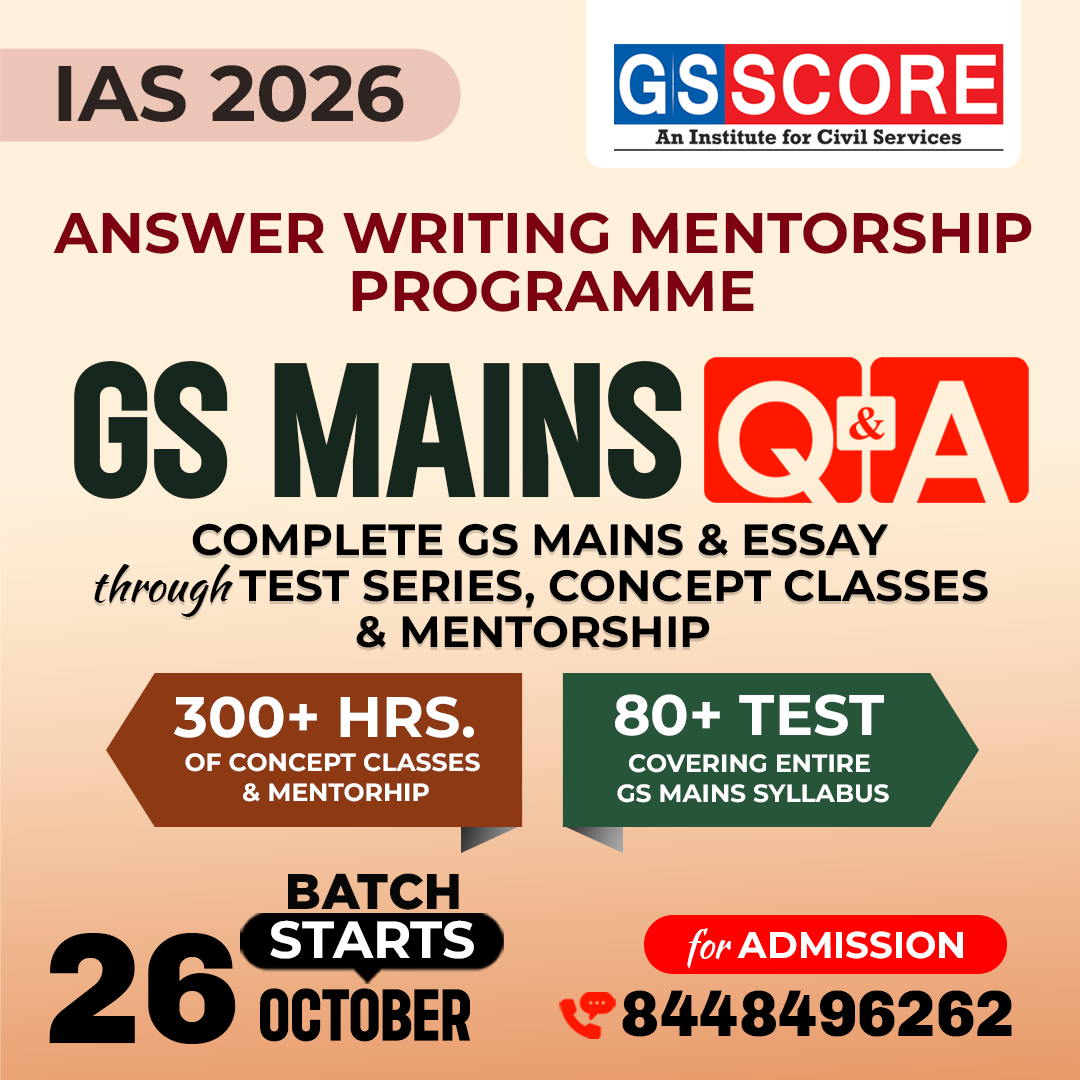


Instruction:
- There will be 2 questions carrying the First Question is-10 marks Write your answers in 150 words and the Second Question is-15 marks Write your answers in 250 words.
- Any page left blank in the answer-book must be crossed out clearly.
- Evaluated Copy will be re-uploaded on the same thread after 2 days of uploading the copy.
- Discussion of the question and one to one answer improvement session of evaluated copies will be conducted through Google Meet with concerned faculty. You will be informed via mail or SMS for the discussion.
Question #1. Did the reign of Krishnadevaraya mark the beginning of a new epoch in the history of Vijayanagar, and if so, what were the significant changes or developments during his rule? 10 marks (150 words)
Question #2. Vijayanagar Empire had developed an advance economy. In this context elaborate the development of Economy under Vijayanagar? 15 marks (250 words)
(Examiner will pay special attention to the candidate's grasp of his/her material, its relevance to the subject chosen, and to his/ her ability to think constructively and to present his/her ideas concisely, logically and effectively).
STEPS & INSTRUCTIONS for uploading the answers
Step 1 - The Question for the day is provided below these instructions. It will be available at 7:00 AM.
Step 2 - Uploading of Answers : Write the answer in A4 Sheet leaving proper margins for comments and feedback and upload the PDF in MY ACCOUNT section. Click on the option of SUBMIT COPY to upload the PDF.
Step 3 - Deadline for Uploading Answers: The students shall upload their answers by 7:00 PM in the evening same day. The first 50 copies will be evaluated.
Step 4 - Feedback : Mentors will give their feedback for the answers uploaded. For more personalised feedback, join our telegram channel by clicking on the link https://t.me/mains_answer_writing_cse . A one-to-one session will be conducted with the faculty after copy evaluation in 72 Hrs.
Model Answer
Question #1. Did the reign of Krishnadevaraya mark the beginning of a new epoch in the history of Vijayanagar, and if so, what were the significant changes or developments during his rule? 10 marks (150 words)
Approach
- The question focuses on the dimensions of 1) the reign of Krishnadevaraya mark the beginning of a new epoch in the history of Vijayanagar, 2)the significant changes or developments during his rule.
- Introduction (Summary of key demand of the question, along with necessary facts).
- Conclusion by summing up the gist of the answer.
The reign of Krishnadevaraya marked the beginning of a new epoch in the history of Vijayanagar. Krishnadevaraya was an emperor of the Vijayanagara Empire reigning from 1509 to 1529. He was the third monarch of the Tuluva dynasty and is considered to be one of the greatest rulers in Indian history.
The reign of Krishnadevaraya mark the beginning of a new epoch in the history of Vijayanagar:
- Krishnadevaraya’s rule was characterized by expansion and consolidation. He presided over the empire at its zenith and is regarded as an icon by many Indians. Under his reign, Vijayanagara emerged as the strongest empire in South India. He ruled the largest empire in India after the fall of the Islamic Delhi Sultanate.
- Krishnadevaraya’s military campaigns were marked by several significant victories. He defeated the sultans of Bijapur, Golconda, and the Bahmani Sultanate, and inflicted severe defeats on the Gajapatis of Odisha. The land between the Tungabhadra and Krishna River (the Raichur doab) was acquired during his reign (1512).
- Krishnadevaraya was not only an able administrator but also an excellent general, leading from the front in battle and even attending to the wounded. On many occasions, he changed battle plans abruptly, turning a losing battle into victory. His Prime Minister Timmarusu played a significant role in his success and was regarded as a father figure responsible for his coronation.
The significant changes or developments during his rule include:
- Military expansion: Krishnadevaraya's military campaigns were successful in expanding the territory of the Vijayanagar Empire to its greatest extent. In 1510, he defeated the Bahmani sultanate in the Battle of Raichur, and he annexed its territories. He also conquered the Gajapati kingdom of Odisha in 1520. These conquests made the Vijayanagar Empire the most powerful state in South India.
- Economic prosperity: Krishnadevaraya's reign was a time of peace and prosperity for the Vijayanagar Empire. He promoted trade and commerce, and he built a number of irrigation projects that helped to boost agricultural production. For example, he built the Krishnaraya Sagar dam, which helped to irrigate over 100,000 acres of land. This led to a period of economic growth and prosperity for the empire.
- Cultural flowering: Krishnadevaraya was a great patron of the arts and architecture. He built many magnificent temples and other monuments, which helped to make Vijayanagar a center of art and culture. For example, he built the Virupaksha Temple in Hampi, which is one of the largest and most important temples in South India. He also patronized poets and scholars, and he helped to promote learning and education. This led to a period of cultural flowering in the Vijayanagar Empire.
- Administrative reforms: Krishnadevaraya introduced a number of reforms to the administration and military, which helped to make the Vijayanagar empire a more efficient and effective government. He divided the empire into provinces, each of which was ruled by a governor. He also established a standing army and navy, which helped to protect the empire from its enemies. For example, he created a system of spies to keep track of his enemies and potential threats.
- Religious tolerance: Krishnadevaraya was a wise and just ruler. He promoted religious tolerance and harmony, which helped to create a sense of unity among the people of the empire. He also built temples for all the major religions, including Hinduism, Islam, and Jainism. For example, he built the Jami Masjid in Vijayanagar, which is one of the largest mosques in South India.
- Diplomacy: Krishnadevaraya maintained diplomatic relations with various regional and foreign powers, including the Portuguese. His diplomatic acumen helped secure trade agreements and strategic alliances.
- Legacy and Literary Contributions: His reign produced several literary works, including the famous "Amuktamalyada" in Telugu, written by the renowned poet and his courtier, Krishnadevaraya himself.
Krishnadevaraya's rule ushered in a new epoch in the history of the Vijayanagara Empire. His military successes, patronage of art and culture, economic prosperity, religious tolerance, and administrative reforms contributed to the empire's golden era. His legacy as a visionary monarch and a patron of literature and the arts continues to be celebrated in Indian history and culture.
Question #2. Vijayanagar Empire had developed an advance economy. In this context elaborate the development of Economy under Vijayanagar? 15 marks (250 words)
The Vijayanagara Empire, which thrived in southern India from the 14th to the 17th centuries, indeed had a developed and advanced economy. The empire's economic prosperity can be attributed to several factors. Let's elaborate on the development of the economy under Vijayanagar:
- Agriculture and Irrigation: Agriculture was the backbone of the Vijayanagara economy. The empire's fertile lands were extensively cultivated, with a focus on multiple crops such as rice, millets, pulses, sugarcane, cotton, and spices. The region's abundant water resources were harnessed through an extensive network of irrigation tanks, canals, and reservoirs, allowing for efficient cultivation and increased agricultural productivity.
- Trade and Commerce: The Vijayanagara Empire was strategically located and enjoyed flourishing trade relations with various regions, including the Deccan, Gujarat, Malabar Coast, and foreign markets. Hampi, the capital city, emerged as a major trading center. The empire's control over key ports and river routes facilitated maritime trade, with spices, textiles, precious stones, and other commodities being exchanged. The empire also minted its own coins, reflecting its economic autonomy.
- Market Towns and Guilds: The Vijayanagara Empire witnessed the growth of market towns, which served as centers of economic activity. These towns had organized marketplaces where merchants, traders, and artisans conducted business. The empire had guilds that regulated and promoted specific crafts, such as weaving, metalwork, carpentry, and stone carving. These guilds ensured quality standards, facilitated trade, and fostered the growth of specialized industries.
- Infrastructure Development: The Vijayanagara rulers invested in infrastructure development, which further stimulated economic growth. They constructed well-maintained roads, bridges, and waterways, enhancing transportation and facilitating trade within the empire and with other regions. The construction of stepwells, tanks, and canals contributed to efficient water management and irrigation, supporting agricultural activities.
- Revenue and Taxation: The empire implemented an effective revenue administration system. Land revenue, known as "sist," was a significant source of income for the state. The empire introduced the practice of surveying and assessing land productivity for taxation purposes, ensuring a fair and systematic revenue collection process. Other taxes included customs duties, tolls, and taxes on trade and commerce.
- Patronage of Arts and Literature: The Vijayanagara rulers were great patrons of art, architecture, and literature. They encouraged the growth of fine arts, music, dance, and literature, which contributed to the cultural and intellectual vibrancy of the empire. This patronage not only enriched the cultural landscape but also fostered economic activities related to artistic production, such as the creation of sculptures, paintings, and manuscripts.
- Craftsmanship and Textiles: The Vijayanagara Empire was renowned for its craftsmanship and textile production. Skilled artisans produced exquisite sculptures, metalwork, jewelry, and textiles. Hampi, in particular, was known for its textile industry, which produced high-quality cotton and silk fabrics that were highly sought after in domestic and international markets. The empire's artisans and craftsmen played a significant role in the economic prosperity of the region.
In conclusion, the Vijayanagara Empire's economy flourished due to its focus on agriculture, thriving trade and commerce, well-developed market towns, infrastructure development, efficient revenue administration, patronage of arts and literature, and expertise in craftsmanship and textiles. These factors collectively contributed to the empire's economic growth, prosperity, and cultural richness during its heyday.


